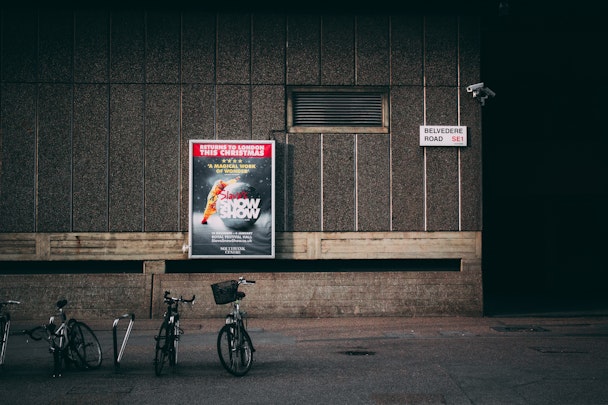The democratization of creativity: how OOH will thrive in 2023
In 2023, out-of-home (OOH) will be perfectly positioned to understand consumers and swerve short-termism, says Katy Hindley of Posterscope.

Out-of-home will thrive on accessibility and consumer context in 2023 / Jeremy Downes
Trust has become an important currency in recent years between consumers, business and the media. When the economic climate is weak, people look to the brands they buy from to reflect their beliefs and stand up for them, backed by this year’s Edelman Trust Barometer in which 63% of people stated they buy or advocate for brands based on their beliefs and values, proving it has never been more important for businesses to demonstrate their values and ethics.
OOH has long been a trusted advertising medium, and at a time when building trust and confidence among consumers is a priority, it offers a multitude of opportunities to reach and connect with consumers.
Here are five OOH trends that can play a key role in helping marketers build trust with consumers in 2023.
Advertisement
1. One size doesn’t fit all in a crisis
Consumer confidence is low, and although some brands will find it hard to win a share of a shrinking wallet, people are still out there. They’re just going to be more selective about what they choose to pay attention to.
The OOH media infrastructure is designed around consumer behavior; targeting triggers around context, locations, and communities – so it’s well-placed to answer these new challenges.
Brands can use OOH’s brand-building power to fuel long-term growth, avoiding falling foul of ‘short-termism’ and tapping into its trustworthy credentials to deliver appropriate messages. By understanding nuanced consumer behaviors and current needs, it’s possible to strike the right tone and balance.
Advertisement
2. Getting comfortable with uncertainty
There is no single point of truth, no one data set that tells us everything there is to know about consumer behavior. This year, we must look at multiple data sources to build a comprehensive and informative picture, and not rely on old data and learnings. The (slow) death of the cookie means context has again come to the forefront, while OOH is perfectly positioned to prime audiences in multiple contexts and environments.
Additionally, the ability to use location data to automate buying triggers in order to influence the buyer journey, as well as dynamic creative to optimize relevance, enables brands to be more targeted, efficient, and effective.
Programmatic OOH will continue to be one of the fastest-growing channels, with omnichannel pipelines becoming easier to navigate and a new focus on the role of digital OOH.
Suggested newsletters for you
3. Everything ‘on the go’
We have a deep understanding of mobility and consumer movement patterns to find where consumers are and what they are searching for. Posterscope’s recent Point of Search study shows that searches that take place in OOH locations are more diverse and valuable to brands than those made at home – as audiences are better primed to receive the message.
Not only that, but they also lead to more action. So, if effective attention is the endgame for brands, this data illustrates the context in which consumers engage with brands in everyday environments through habitual behaviors.
4. The democratization of creativity
Basic old-school rules don’t change for effective OOH creative, but what has changed is the range of storytelling tools available: 3D anamorphic, WebAR, InApp AR, XR applications and scannable QR codes are transforming OOH into a destination for content.
OOH ads can now extend beyond the physical location to be shared in social channels, integrated into influencer tactics, and become a regular fixture in PR.
Equally, existing creative technology such as 3D will become more affordable and available on multiple formats. QR, AR and XR will offer both online and physical retailers an opportunity to ‘extend the store’, making their OOH ads shoppable.
5. The green future is now
The ad industry has woken up to the fact that advertising impacts the environment and encourages overconsumption but also acknowledges that as part of the problem, we are also part of the solution.
OOH is a platform for good – good for audiences, communities and businesses. It has the dual role of serving its local areas, and a commitment to be profitable. 50% of all money invested in the medium gets put back into communities to improve local environments and infrastructure.
All major OOH media owners have implemented quality and efficiency strategies across their businesses to offset the digitization of OOH and drive carbon neutrality. The industry is on track to carbon net zero (90%) by 2030 and will continue to work on the measurement of emissions. The use of 100% renewable energy and initiatives such as bee hotels, vertical meadows and recycled 6 sheet paper means brands can feel confident that OOH is a trusted and responsible media choice.
Content by The Drum Network member:

dentsu UK & Ireland
Part of Dentsu Group, dentsu international is a network designed for what’s next, helping clients predict and plan for disruptive future opportunities and create...
Find out more
